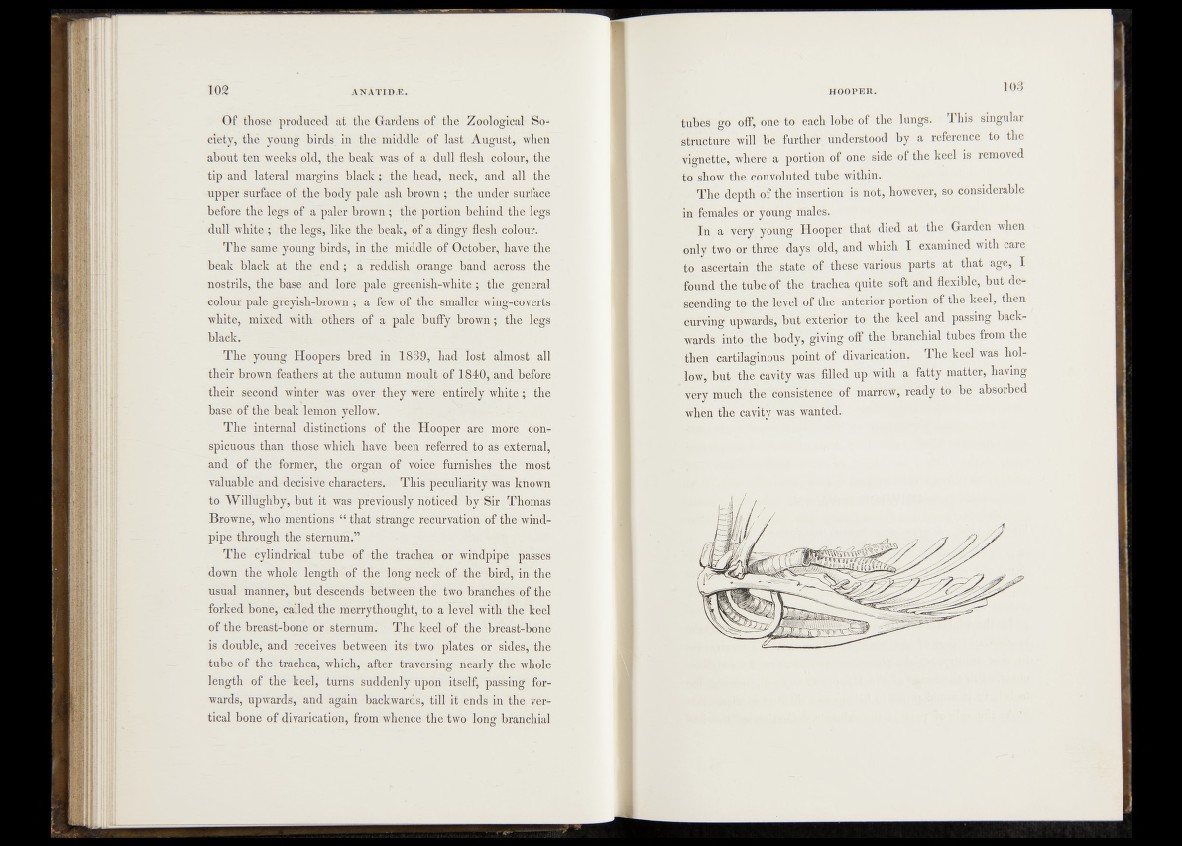
Of those produced at the Gardens of the Zoological' So-*
ciety, thé young birds in the middle of last August, when
about ten weeks old, the beak was of a dull flesh colour, the
tip and lateral margins black; the head, neck, and all the
upper surface of the body pale ash brown ; the under surface
before the legs of a paler brown; the portion behind the legs
dull white ; the legs, like the beak, of a dingy flesh colour.
The same young birds, in the middle of October, have “the
beak black at the end; a reddish orange band across the
nostrils, the base and lore pale greenish-white ; the i general
colour pale greyish-brown ; a few of the smaller wing^Co verts
white, mixed with others of a pale buffy brown; the legs
black.
The young Hoopers bred in 1839, had lost almost all
their brown feathers at the autumn moult of 1840, and before
their second winter was over they were entirely'white; the
base of the beak lemon yellow.
The internal distinctions of the Hooper are more conspicuous
than those which have -been referred to as external,
and of the former, the organ of voice furnishes the ms§j|J
valuable and decisive characters. This peculiarity was known
to Willughby, but it was previously noticed by Sir Thomas
Browne, who mentions “ that strange recurvation of the windpipe
through the sternum?’
The cylindrical tube of the trachea or windpipe passes
down the whole length of the long neck of the bird, in the
usual manner, but descends between the two branches of the
forked bone, called the merrythought, to a level with the keel
of the breast-bone or sternum. The keel of the breast-bone
is double, and receives between its two plates or sides, the
tube of the trachea, which, after traversing nearly the whole
length of the keel, turns suddenly upon itsélf, passing forwards,
upwards, and again backwards, till it ends in the vertical
bone of divarication, from whence the two long branchial
tubes go off, one to each lobe of the lungs. This singular
structure will be furthek understood by a reference to the
vignette, where a portion of one side of the keel is removed
to show the convoluted tube within.
The depth of the insertion is not, however, so considerable
in females or young males.
In a very young Hooper' that died at 'the Garden when
only two or three days old, and which I examined with care
to ascertain the state of these various parts at that age, I
found the tube of the trachea quite soft and flexible, but descending
to the level of the anterior portion of the keel, then
curving upwards, but exterior to the keel and passing backwards
into _the body, giving off the branchial tubes from the
then cartilaginous point of divarication. The keel was hollow,
but the cavity was filled up with a fatty matter, having
tig ty much the consistence of marrow, ready to be absorbed
when the cavity was wanted.
/